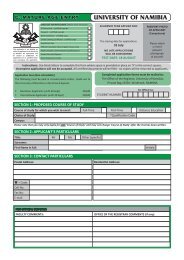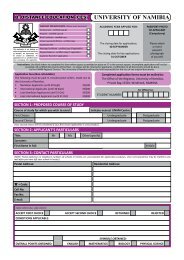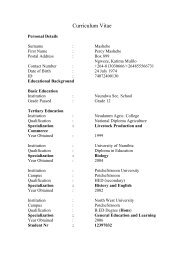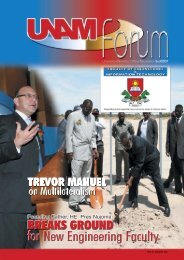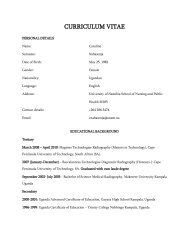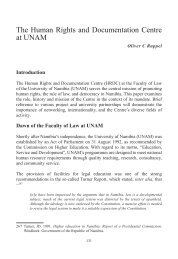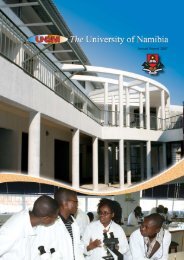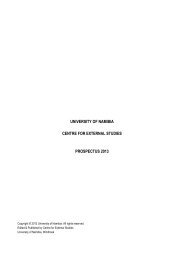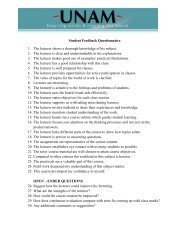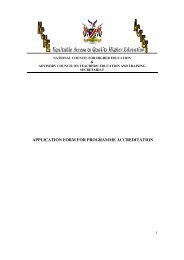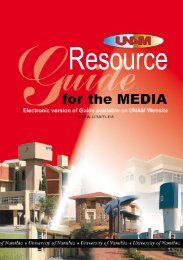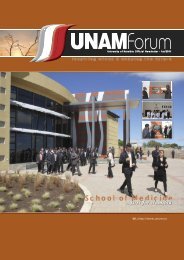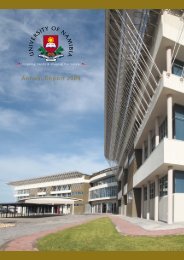ANNUAL REPORT 2011 - University of Namibia
ANNUAL REPORT 2011 - University of Namibia
ANNUAL REPORT 2011 - University of Namibia
Create successful ePaper yourself
Turn your PDF publications into a flip-book with our unique Google optimized e-Paper software.
Growth rates <strong>of</strong> Gracilariopsis funicularis (Gracilariaceae, Rhodophyta) in laboratory culture<br />
under varying salinities<br />
During the end <strong>of</strong> the year, Mr. Stehanus Hamuntenya,a final student from the Department <strong>of</strong><br />
Fisheries and Aquatic Sciences was at the Centre where he carried out a research titled: Growth rates<br />
<strong>of</strong> Gracilariopsis funicularis (Gracilariaceae, Rhodophyta) in laboratory culture under varying<br />
salinities, under the supervision <strong>of</strong> Dr. Shuuluka and Mr. Tjipute.<br />
Measurements <strong>of</strong> fresh weight <strong>of</strong> Gracilariopsis funicularis indicated that fresh weights at salinity<br />
level <strong>of</strong> 40ppt was increasing rapidly between day 3 to day 18 as compared to salinities <strong>of</strong> 25 ppt<br />
and 35 ppt. However from day 18, the fresh weights increased rapidly at salinity <strong>of</strong> 25 ppt as<br />
compared to salinity <strong>of</strong> 35 and 40 ppt. During day 21 and day 24, plants growing in salinity <strong>of</strong> 35 ppt<br />
seem to decrease in weight. The specific growth rate per day (%/day) showed that the plants grew<br />
well in all salinities tested. All salinities provided a faster growth rate until day 12 and the growth<br />
started to decrease thereafter. It worth noting that salinity <strong>of</strong> 35 ppt had the lowest growth rate as<br />
from day 21 until the end <strong>of</strong> the experimental period, with growth rate ranging from 1.58 to 1.26<br />
%/day. However, statistical analysis indicated that there was no significant difference in the growth<br />
rate <strong>of</strong> Gracilariopsis funicularis grown at the various salinities (p > 0.05). From observations during<br />
the experimental period, after day 18, Ulva started to appear in the flasks that were incubated at 25<br />
and 35 ppt, however, appearance <strong>of</strong> Ulva at 40 ppt flask was not observed.<br />
Commercial cultivation and processing <strong>of</strong> seaweeds should be a national priority and taken up as a<br />
mission mode project. Setting up agar extraction companies in <strong>Namibia</strong> can provide the much needed<br />
employment among the youths, thereby leading to reduction in unemployment. This study provided<br />
benchmark information for future study on the eco-physiology <strong>of</strong> the red seaweed species,<br />
Gracilariopsis funicularis in <strong>Namibia</strong>.<br />
16



